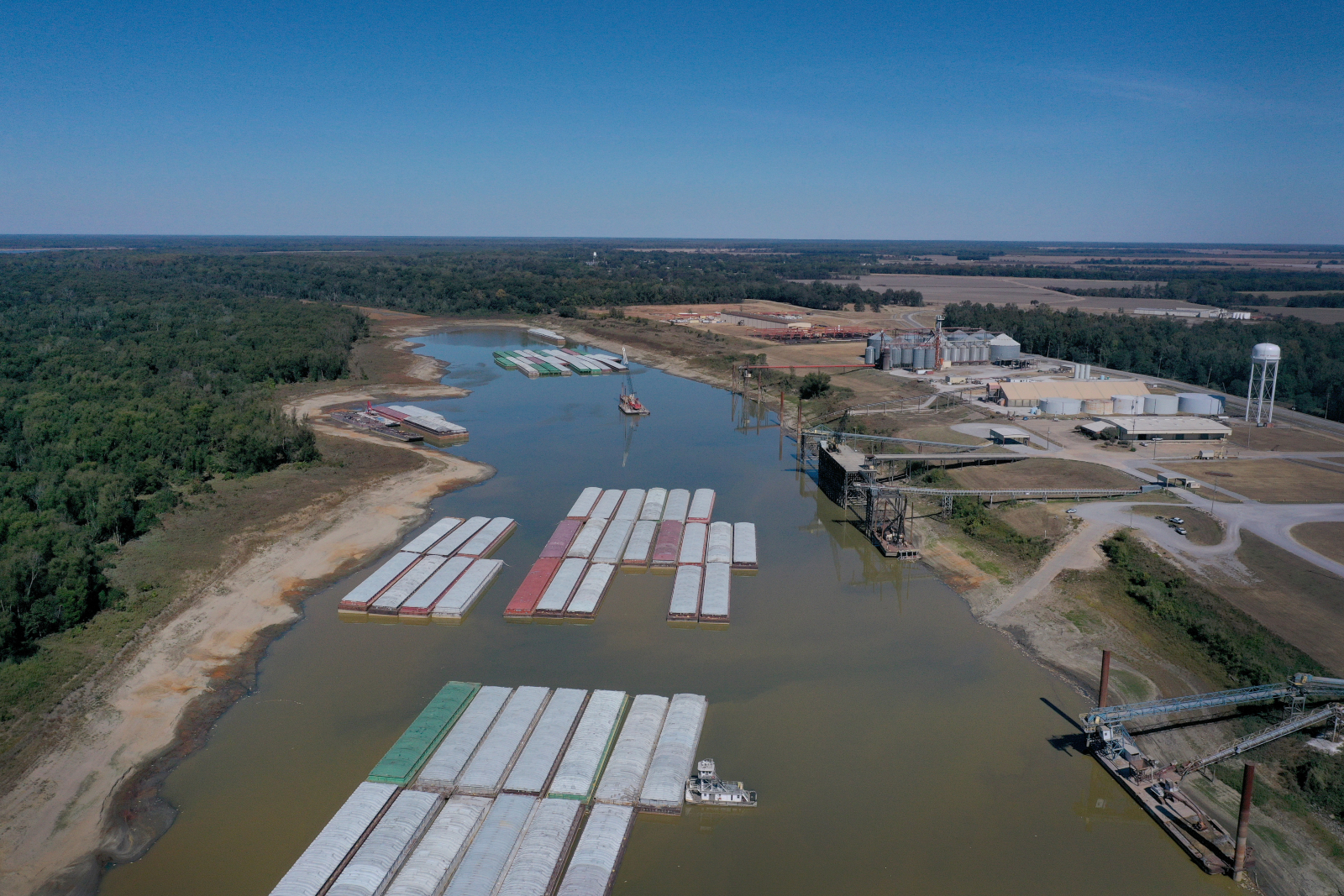This story is part of the Grist series Parched, an in-depth look at how climate change-fueled drought is reshaping communities, economies, and ecosystems.
Harvest time has come, but ongoing droughts have left farmers with nowhere to send their grain.
The Mississippi River, which carries 60 percent of the country’s grain exports, has reached historically low water levels. This week, the Mississippi reached minus-10.75 feet in Memphis, Tennessee, a level never before seen.
“It’s never been this bad in my career,” Butler Miller of St. Louis-based barge company Robert B. Miller and Associates told St. Louis Public Radio. “The last time the river levels were this low was in the 1980s. Rain is really the only thing that will fix it.”
The low water levels are caused by the nation’s ongoing drought, which has left the region without rain for weeks. The lack of rain has dried up the Mississippi, and even revealed human remains and lost shipwrecks up and down the river.
Barges have been stalled or slow-moving along the river for weeks, causing major disruption in the agricultural industry at a time when farmers generally expect to move harvested grains.
Before the Mississippi dried out, grain was booming in the United States. While Ukraine typically exports tens of millions of pounds yearly, the ongoing Russian-Ukrainian war has caused the global supply of grains to stagnate. Amidst this conflict, U.S. grain prices soared early in the year, but now the main way of transporting these commodities has stalled, causing supply to build up at ports and prices to drop. According to Bloomberg, corn shipments in the Mississippi are declining by the week, with more than 2,000 ships waiting to move down the river.
Soybeans and other commodities have been left to rot outside of grain storage elevators, according to industry reports. As more and more farmers try to offload harvest commodities, space is running out as the wait to move downriver drags on.
“I’ve never been in a harvest where I was hoping for a hurricane. But this year, it wouldn’t hurt my feelings,” southern Illinois farmer Adam Thomas told Farm Week Now, a division of the Illinois Farm Bureau.
The Mississippi is a crucial waterway where droughts and floods have pinpointed monumental years along its 2,300 miles. A drought in 1988 dropped water levels in the Mississippi to their previous record low, which lasted nearly two years. Three years ago, the river flooded in the summer, causing $2 billion in damages, and was the longest-lasting flood the river has seen in recent history.
According to the U. S. Geological Survey, climate change is causing more extreme weather events — such as regions oscillating between droughts and floods.
Weather predictions from the National Oceanic and Atmospheric Administration show that ongoing droughts across the Corn Belt and the West will continue into January, with little to no rain in sight. These predictions are already hampering growers who normally plant winter crops, such as winter wheat in Kansas and Oklahoma.
In addition to supply chain and agricultural woes, concerns over drinking water contamination have begun. The Gulf of Mexico is rising with sea levels, causing saltwater to make its way into the water-starved Mississippi.
The U.S. Army Corps of Engineers is constructing an underwater, 1,500-foot-wide levee to block salt water from contaminating water supplies, with communities in Louisiana already issuing drinking water notices. According to the Environmental Protection Agency, more than 50 cities rely on the Mississippi for their drinking water.




